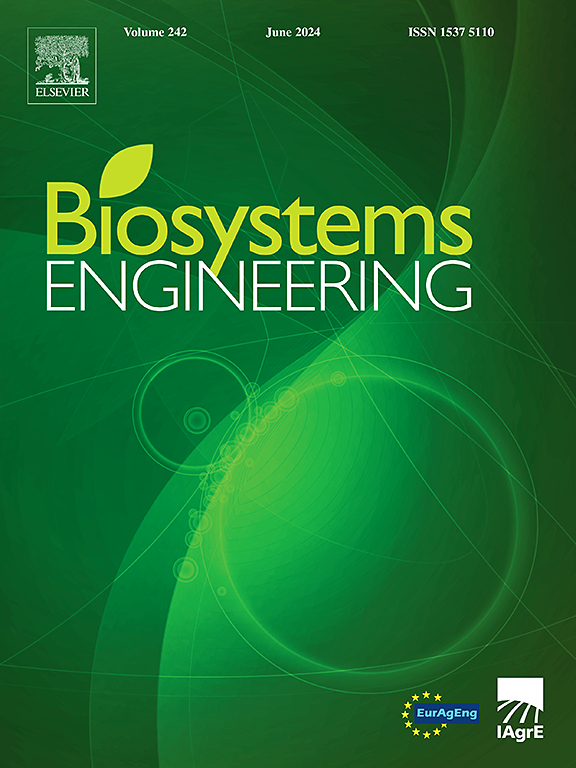A reconstruction method for incomplete pig point clouds based on stepwise hole filling and its applications
IF 5.3
1区 农林科学
Q1 AGRICULTURAL ENGINEERING
引用次数: 0
Abstract
The 3D model accurately depicts the surface characteristics of pigs, enabling measurement of their body size and prediction of the weight. However, multi-view 3D point cloud reconstructions of pigs often suffer from significant missing areas in leg and torso regions due to factors like railing obstructions and camera blind spots. To address this issue, this paper proposes a method for reconstructing incomplete pig point clouds based on stepwise hole filling. This approach converts the point cloud into mesh, initially filling part of the large, high-curvature holes that are difficult to handle based on pig morphology to narrow their extent, followed by filling remaining areas. Experimental results show that the completion effect of this method is visually superior to existing completion methods. The mean relative errors for calculating cannon bone girth, chest girth, and abdominal girth using the completed model compared to manual measurements were 5.04 %, 3.83 %, and 3.51 %, respectively, representing reductions of 1.24 %, 11.47 %, and 9.48 % compared to the method of directly using incomplete point clouds. In addition, utilizing the watertight properties of the mesh model completed by this method, the volume of the pig was calculated, and a volume-based Logistic regression weight estimation model was established, achieving a mean absolute percentage error (MAPE) of 4.06 %. This underscores its high precision in estimating pig weight.
基于逐级填孔的不完全猪点云重建方法及其应用
3D模型准确地描绘了猪的表面特征,可以测量它们的体型和预测体重。然而,猪的多视图3D点云重建由于栏杆障碍物和相机盲点等因素,经常会在腿部和躯干区域出现明显的缺失区域。针对这一问题,本文提出了一种基于逐级填孔的不完全猪点云重建方法。该方法将点云转换为网格,首先填充部分基于猪形态难以处理的大、高曲率孔以缩小其范围,然后填充剩余区域。实验结果表明,该方法的补全效果在视觉上优于现有补全方法。与人工测量相比,使用完整模型计算炮骨围、胸围和腹围的平均相对误差分别为5.04%、3.83%和3.51%,与直接使用不完整点云的方法相比,分别降低了1.24%、11.47%和9.48%。此外,利用该方法完成的网格模型的水密性,计算了猪的体积,建立了基于体积的Logistic回归权重估计模型,平均绝对百分比误差(MAPE)为4.06%。这强调了它在估计猪体重方面的高精度。
本文章由计算机程序翻译,如有差异,请以英文原文为准。
求助全文
约1分钟内获得全文
求助全文
来源期刊

Biosystems Engineering
农林科学-农业工程
CiteScore
10.60
自引率
7.80%
发文量
239
审稿时长
53 days
期刊介绍:
Biosystems Engineering publishes research in engineering and the physical sciences that represent advances in understanding or modelling of the performance of biological systems for sustainable developments in land use and the environment, agriculture and amenity, bioproduction processes and the food chain. The subject matter of the journal reflects the wide range and interdisciplinary nature of research in engineering for biological systems.
 求助内容:
求助内容: 应助结果提醒方式:
应助结果提醒方式:


